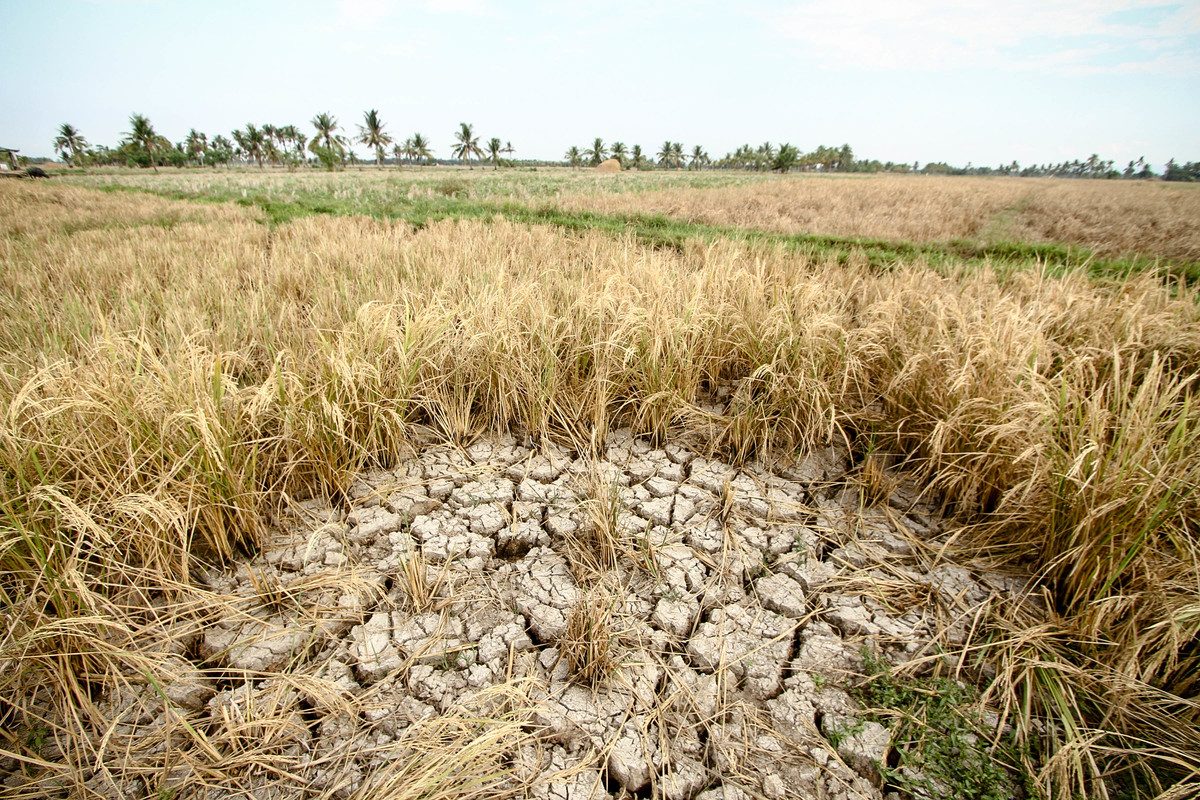SUMMARY
This is AI generated summarization, which may have errors. For context, always refer to the full article.

MANILA, Philippines – Mindanao has been the region most affected by the current El Niño phenomenon in the Philippines, with at least 5 areas – Maguindanao, North Cotabato, South Cotabato, Cotabato City, and Zamboanga City – declaring states of calamity since March 2015. (READ: 100% crop damage reported in parts of Mindanao due to drought)
The current El Niño is expected to weaken in the latter half of 2016, but the effects have already taken their toll on the farmers. On Friday, April 1, at least two were killed and 116 were wounded after drought-affected farmers in Kidapawan City in North Cotabato organized a protest to demand help from the government.
Just a month after the onset of El Niño in March 2015, its effects in the province can already be seen, with some residents being forced to eat wild yam because there are no other edible crops being grown. (READ: Last Green Grass in North Cotabato)
Mindanao most vulnerable
According to Anthony Lucero, officer-in-charge of state weather bureau PAGASA’s Climate Monitoring and Prediction Section, Mindanao is the region in the Philippines most vulnerable to the impacts of El Niño because of its proximity to the equator.
“Mindanao, malapit ‘yan sa equator and during an El Niño, nagkakaroon ng reversal wind. At ‘yun ang nagiging dahilan [kaya] unang-una silang naapektuhan. Kasi ‘yung sinasabi nating reversal ng wind sa 5 degrees north and 5 degrees south,” Lucero explained. “A reversal wind situation discourages development of rain-causing weather systems.”
(Mindanao is near the equator and during an El Niño situation, reversal wind occurs. That is the reason why it is the first one to be affected. The reversal wind occurs at 5 degrees north and 5 degrees south.)
Mindanao, home to the country’s poorest and where more than half of the population depend on agriculture, has been badly affected by past periods of El Niño in the country.
During the last El Niño to hit the country in 2010, Mindanao’s power sector was heavily affected, because most provinces depend on water for their electricity, according to Lucero. During the 1997-1998 El Niño, the strongest El Niño of the 20th century, the region’s power and agriculture sectors were also among the most affected.
Lucero said that among the regions in Mindanao, its western portion is the most vulnerable to drought.
Normal dry season exacerbated by El Niño
The usual dry season in the western part of Mindanao, which occurs from February to April, sometimes extending until May, is aggravated by the current El Niño, according to Lucero.
“Dry season na rin nila kasi. ‘Yung dry season nila, pinalala pa yan ng El Niño. How? Kasi mas maaga ‘yung nagiging dry season nila… at imbes na maiksing dry season, humaba yung dry season nila at saka more intense,” Lucero explained.
(They [western parts] are experiencing a dry season and this is worsened by the current El Niño. How? Their dry season occurred earlier than usual and instead of a short one, it became longer and more intense.)
The western portion of Mindanao is under Climate Type III, meaning the dry season is short. This is also the portion nearest to where reversal wind occurs, making it vulnerable to drought, said Lucero.
Influenced by climate change?
Lucero emphasized that El Niño is a naturally occurring phenomenon, and is not caused by climate change, a common misconception. However, climate change is seen to worsen the effects of El Niño, he said. (READ: How El Niño could affect the Philippines in 2015)
“Maaring nakakapagpalala pa ito ng increasing temperature kasi during an El Niño, tumataas ang temperatura sa Pilipinas and because of increasing temperature in a global extent, napapalala niya pa yon. Maaring ganon, pwede nating sabihin ‘yun, na napapalala ng climate change ang impact ng El Niño, effects on temperature,” Lucero explained.
(Climate change may have aggravated the increasing temperature. Because during an El Niño, the temperature in the Philippines increases, and because of increasing temperature in a global extent, it [the increasing temperature] is exacerbated. We can say that climate change worsens the effects of El Niño on temperature.)
Preparedness
Lucero also added that it is important to note that the effects of El Niño will only be felt in the first quarter of the following year since its announcement. This means more time for local government units to prepare.
“When El Niño starts in the Pacific, it takes a few months before it affects rainfall in the Philippines. Another few weeks before we feel the drought. There’s a delay,” said Dr Wendy Clavano, an earth systems scientist from Environmental Science for Social Change (ESSC).
As early as May 2014, PAGASA already warned of the potential development of El Niño in the country. The Department of Agriculture also identified which provinces are highly vulnerable to drought. (READ: Gov’t prepares PH agriculture sector for El Niño)
Based on PAGASA’s forecasts, the current El Niño is expected to worsen in April (peak of dry season), and would weaken by the end of May. By then, the agency is projecting that the sea surface temperature will go back to its neutral condition and the country will then transition to La Niña – characterized by unusually cool ocean surface temperatures in the central and eastern tropical Pacific
With the next El Niño expected to occur in the next two to 7 years, will the national and local government units and farmers be more prepared? – Rappler.com
Image of farmer planting in parched land from Shutterstock
Add a comment
How does this make you feel?
There are no comments yet. Add your comment to start the conversation.